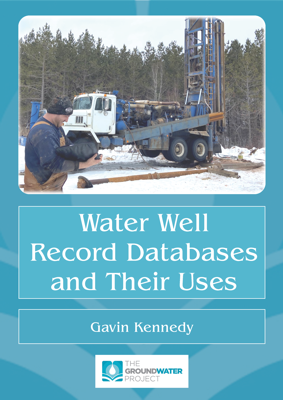This book highlights the importance of well record management as a critical component of groundwater and drinking water management programs. The book provides an overview of the history, availability, uses, shortcomings and best practices of these databases, which is useful background for students, educators, researchers, groundwater professionals and managers interested in learning about this topic.
Over the past 50 years well record databases have evolved in many jurisdictions from a hard copy archive of well record forms to the open distribution of well record data over the internet in a digital format. Where available, weblinks to digital well record databases from around the world are provided in the book, although the availability of water well record databases remains highly variable.
The book also identifies the diverse types of users of well record information and provides several examples of how well record data are used to support groundwater assessment and research. The discussion on common deficiencies and best practices for well record data management may be used as a framework for improvements to well record management programs. Continued improvements to data quality and internet accessibility will foster greater utilization of these datasets for groundwater management and research.

